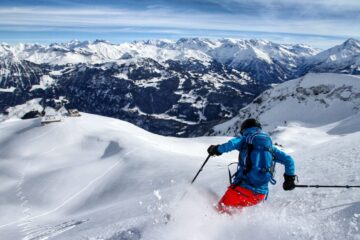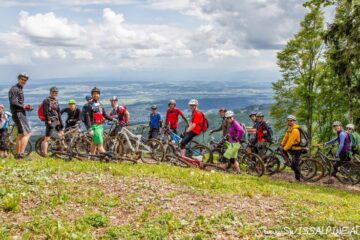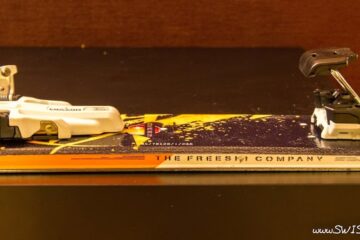Ski touring in many ways is the original form of skiing. Long before ski lifts were invented the only way to ski was by hiking up a mountain to ski back down. In the last few years ski touring has become increasingly popular and even more so with the onset of Covid in March 2020.
Touring allows you to get away from the crowds, avoid the lift lines and spend a day in the mountains on your own terms. Ski touring involves using special skis with an articulating binding and skins to allow you to hike uphill under your own power after which you can enjoy the off-piste descent.
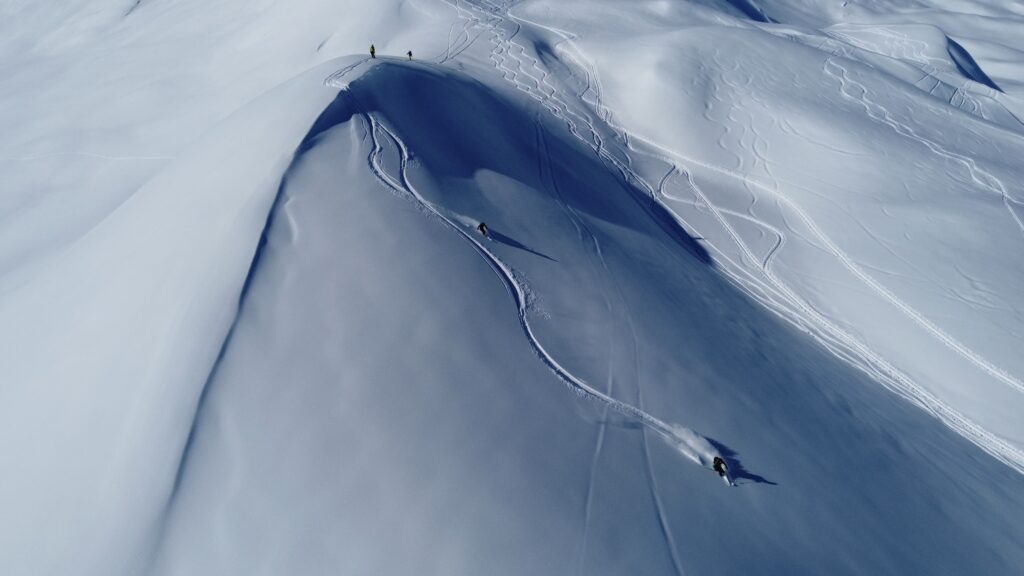
These days ski touring equipment is quite easy to use and anyone who can ski somewhat proficiently on red or black pistes can think about getting into ski touring. The wider skis of today allow more flotation in deep snow and rockered skis turn easier in difficult snow conditions. These developments mean that the skill level required to ski off-piste is significantly reduced compared to 10 or 20 years ago. The weight of the equipment, particularly the bindings, is also much lighter, you no longer need to be super fit to enjoy a day out ski touring.
If you can ski somewhat proficiently on a red or black piste, are fit enough for a full day hike in the Alps and enjoy skiing off-piste or like to get away from the crowds then ski touring may well be for you!
Equipment
Ski touring equipment can be broken down into the actual equipment required to hike up the mountain and the safety equipment required to keep you as safe as possible when out in the Alps.
The basic equipment required for ski touring is a set of touring skis, touring bindings, skins, touring shoes and poles.
Touring Skis: Touring skis are generally somewhat wider than piste skis and may contain a degree of rocker. The wider profile of the ski underfoot allows the ski to float higher in deep snow which in turn makes it easier to turn and control when in a deeper snow environment. Rocker refers to the shape of the ski when looking at it side-on. The concept of rocker comes from surfboards where the nose of the board curves upwards to keep it over chop on the water surface and also provides a curve for the edge to follow when tilted on its side in a softer surface. Relating this to your ski means the ski floats better over uneven terrain and also allows the ski to behave like a smaller ski when turning, but give the floatation and stability of a longer ski when travelling in deep snow at speed.
Touring Binding: Touring bindings are articulated bindings that allow the heel to move freely and give a somewhat natural walking gait when hiking uphill on the skis. The older style of “frame” bindings operate much like standard alpine bindings where you click your ski shoe into the frame and the rotation point is in front of your toes. In the last 10 years or so there has been a surge away from these binding to “tech” bindings which involve two pins that click into two holes in the front of your ski shoe which moves the rotation point closer to the ball of your foot to give a more natural gait but also significantly reducing the weight of the binding by removing the frame completely.
Skins: Skins are essential for touring skis, these are carpet-like covers for the bottom of your skis which allow the skis to slide forwards but without slipping backwards. It is these features in combination with the touring binding that allows you to walk uphill on your skis without sliding back down the mountain.
Touring Shoes: Ski touring shoes feature an articulating ankle and inserts in the toes and heels to allow them to work with tech bindings along with a rubber sole like that of a hiking boot. This makes it easier to walk for long distances in them and also safer if you need to leave your skis and go on foot to a summit when out in the mountains.
Touring Poles: Ski touring poles are often telescopic and feature a larger basket so they provide more support for you when skiing in deeper snow away from the prepared pistes.

Safety Equipment
There is a “holy trinity” of avalanche safety equipment (Avalanche Transceiver, Shovel, Probe). All three items of essential equipment should always be carried by everyone when leaving marked and controlled runs. It is also vital that everyone learns how to effectively use this equipment.
Avalanche Transceiver: An avalanche transceiver allows a buried person to be found by other members of their group or by bystanders who are also equipped with the correct equipment. If someone gets trapped by an avalanche it is essential that they are found and their airway cleared within 15 minutes of burial as survival chances reduce exponentially if buried longer than this. The only way of making this possible is if all group members are correctly equipped.
Avalanche Shovel: If someone is buried more than a few centimetres it will be impossible to dig them out without a good shovel. Furthermore, no one knows in advance who if anyone in a group might get buried therefore it is essential that everyone in the group has a good shovel with them when in the backcountry.
Avalanche Probe: The probe is often overlooked and inexperienced backcountry travellers will often say it’s not needed. But, the probe is essential to save time when searching and digging out a casualty from an avalanche. The probe allows you to pinpoint the casualty and gives you a reference when digging to know exactly where you should be aiming for when digging into the buried victim.
Avalanche Airbag: The airbag is a piece of bonus equipment that is well worth thinking about, in addition to the other safety equipment but never instead of any item from the “holy trinity”. The airbag works by reducing the density of a skier caught in an avalanche and those helping them to float on top of the snow rather than getting pulled deeper. The caveat to this is that the avalanche must be flowing, so if caught in an avalanche that ends in a terrain trap or goes over a cliff or rock band the airbag will not provide any protection.
Safety equipment is only going to keep you safe when you don’t increase your risk due to having the equipment. The number one tool for remaining safe in the backcountry is education and managing risk. Keep the risk as low as possible so that you never need to use your safety equipment if at all possible.
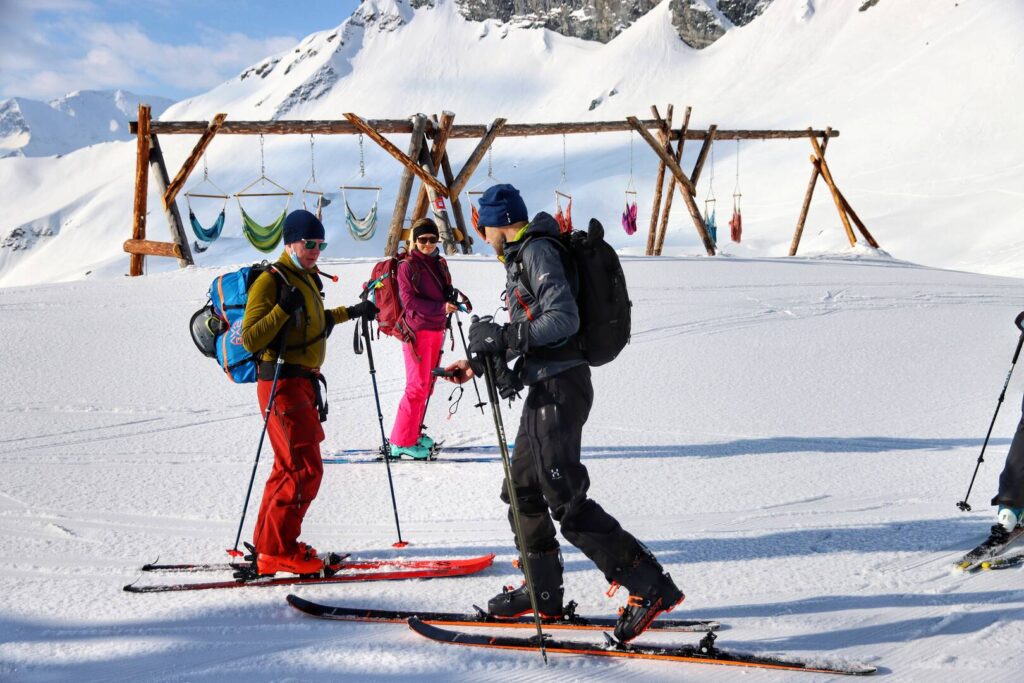
Education
All the equipment in the world will not save your or your companions life if you don’t know how to use it. Better still is learning how to manage the risk and remain as safe as possible in the backcountry. Most mountain schools, guides in Switzerland offer avalanche training as well as ski skills and ski touring skills training.
At Swiss Alpine Adventure, we run three different levels of avalanche safety course along with off-piste skills training and ski touring training. Be sure to check out the events section of our website to find more information about our courses.
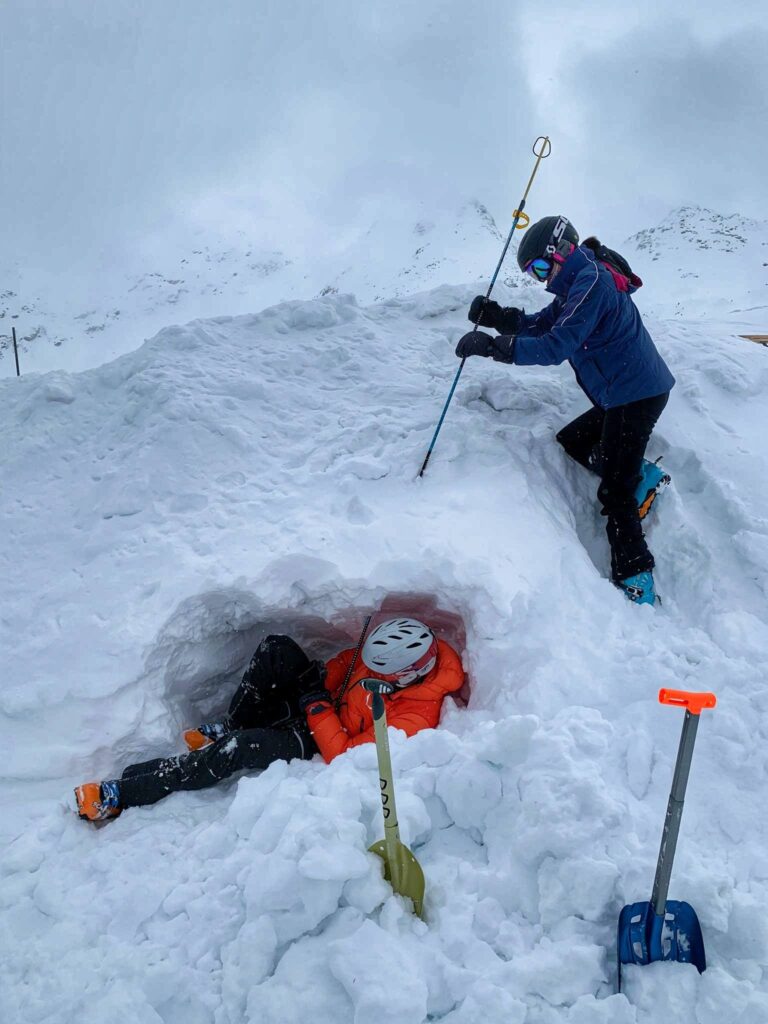
Avalanche Safety Course: An avalanche safety course will introduce you to the safety equipment and show you how to efficiently use it as well as giving you information on how to determine risk and how best to mitigate it. Even if you feel you know how the equipment works from reading the manuals there is still no substitute to practising with the equipment under the supervision of a mountain guide. Here at Swiss Alpine Adventure, we run the following Avalanche Courses.
Level 1: This is our introduction to avalanche safety, get to know the equipment learn how to use it and learn what the risks associated with travel in the backcountry are. This course is perfect if you have no previous backcountry experience and you want to get the basics right to understand more about the risks, how to mitigate them and how to make the best use out of your equipment.
Level 2: This is our introduction to tour planning course. We assume that you have already done some tours and would like to learn the basics of how to plan a backcountry day yourself. Interpretation of the avalanche report, route planning and risk assessment/reduction are covered in this course.
Level 3: Coaching, this course is for those who already do simple backcountry tours and would like to get some practice at planning and leading tours under the supervision of a qualified mountain guide.
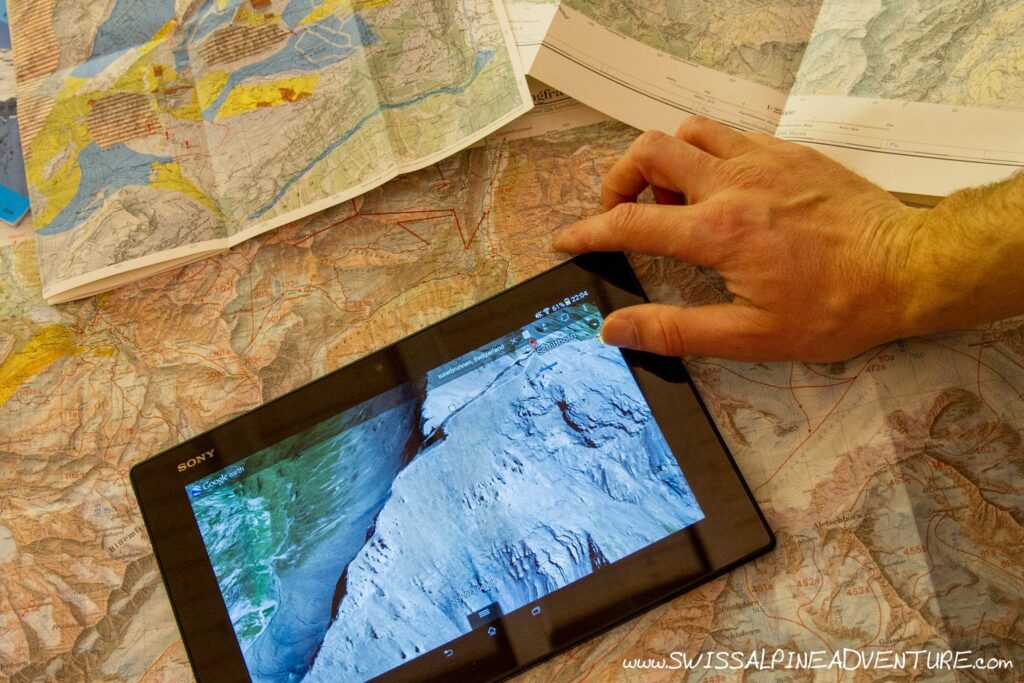
Ski Touring Course: Ski touring training will introduce you to the specifics of the ski touring equipment, how to use the best mount your skins, the ins and outs of using your bindings and also give you tips on how to efficiently walk on touring skis and how to negotiate turns in steeper terrain (kick turns). We run an introduction to ski touring weekend for those who would like to have an in-depth introduction to ski touring and also one-day beginner ski tours just in case you would like to try out ski touring and see if it’s for you. (See the events page for details of the one day tours)
Off-Piste Skills Courses: If you would just like to improve your deep snow skiing skills then we have a beginner and improver skills weekend which will provide coaching both on and off the piste to help you improve your off-piste skills and help you take the next step in your skiing career.
For those who would like to ski tour, but either feel more comfortable with a guide or would like to meet others to ski tour with, we have tours running with one of our guides almost every weekend during the winter starting as soon as there is enough snow for touring. Keep an eye on our website for full details.

Have you questions about ski touring? Comment below or join our forum and get involved in our ski touring discussions.
Looking forward to seeing you in the mountains this winter.
